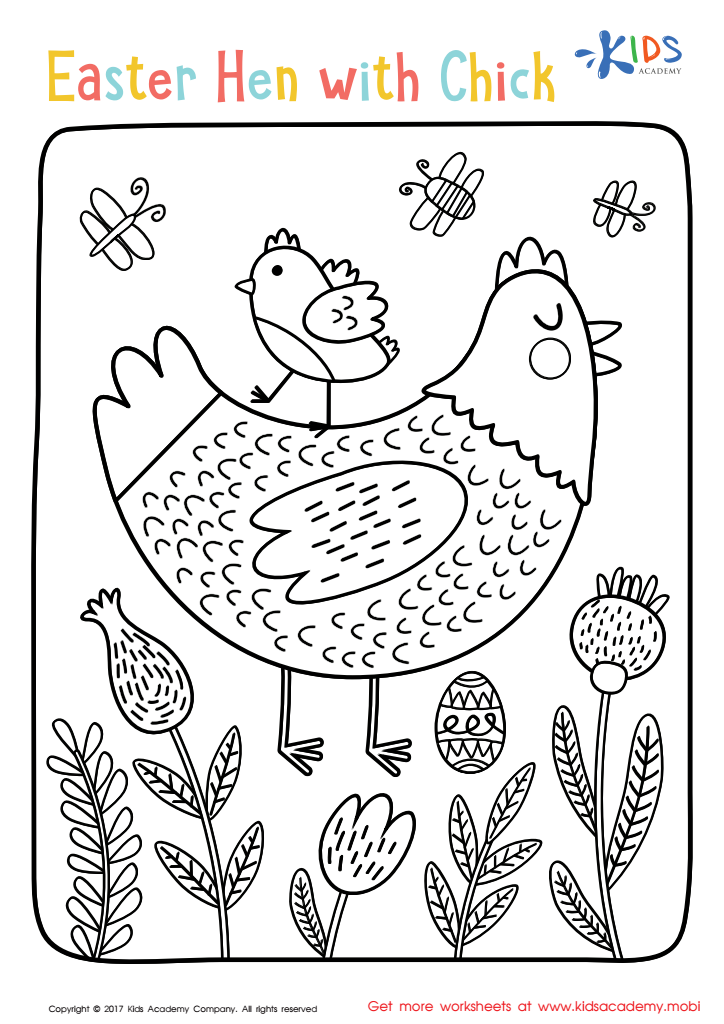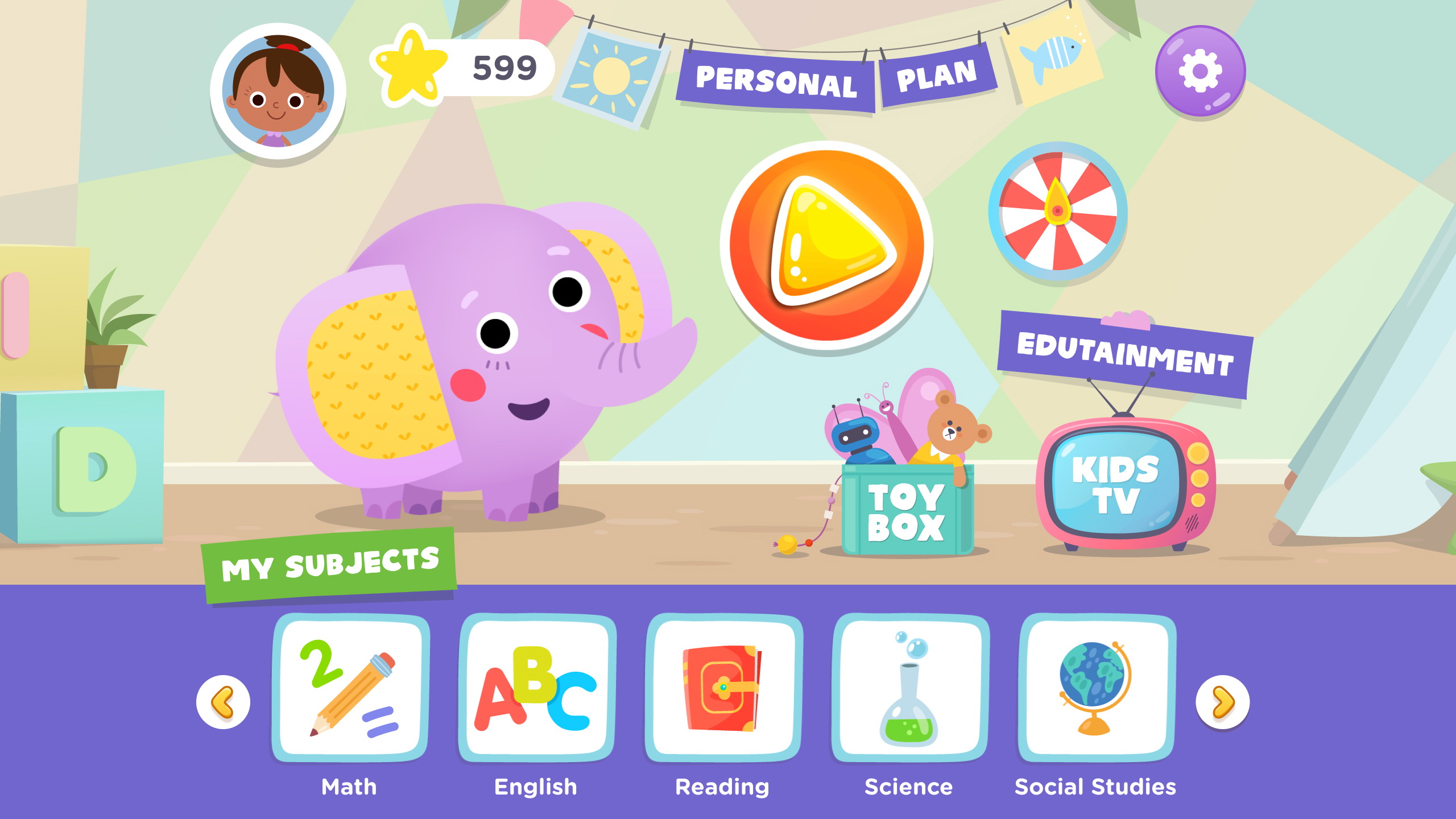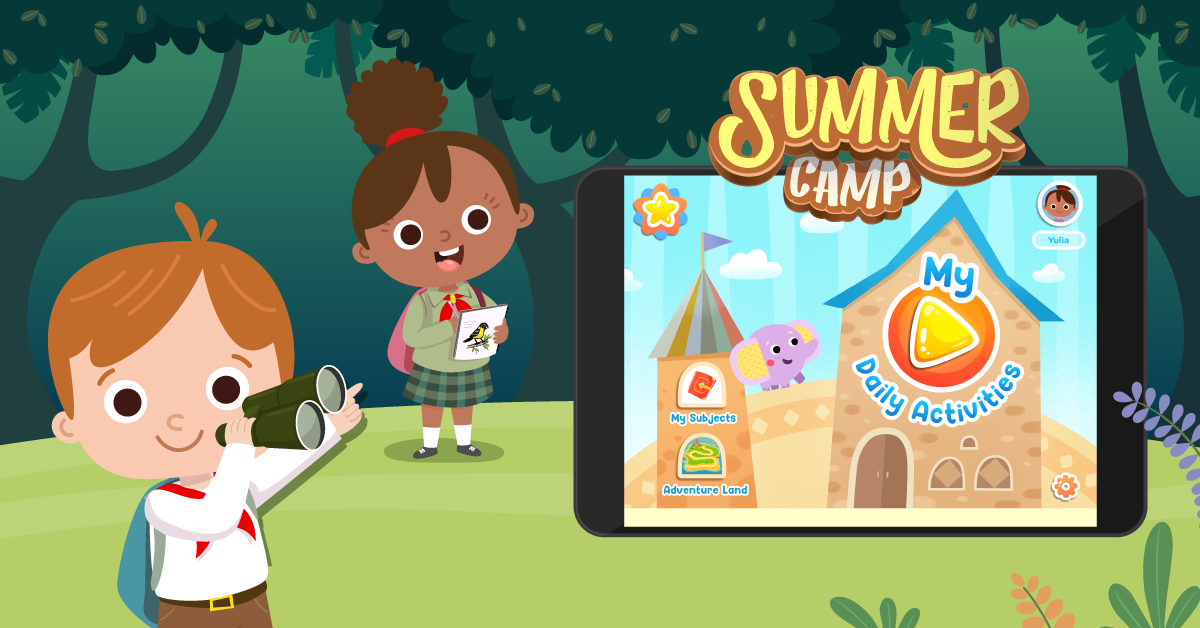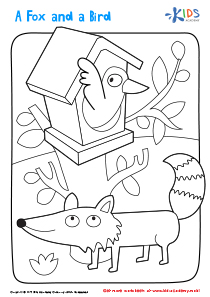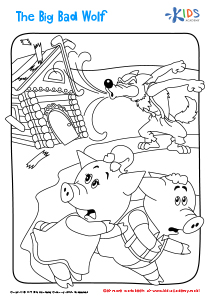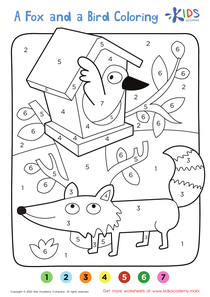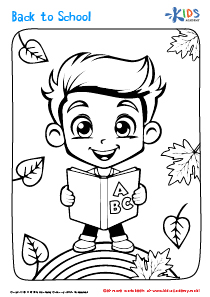Color recognition Coloring Pages Worksheets for 3-Year-Olds
54 filtered results
Difficulty Level
Grade
Age
-
From - To
Subject
Activity
Standards
Favorites
With answer key
Interactive
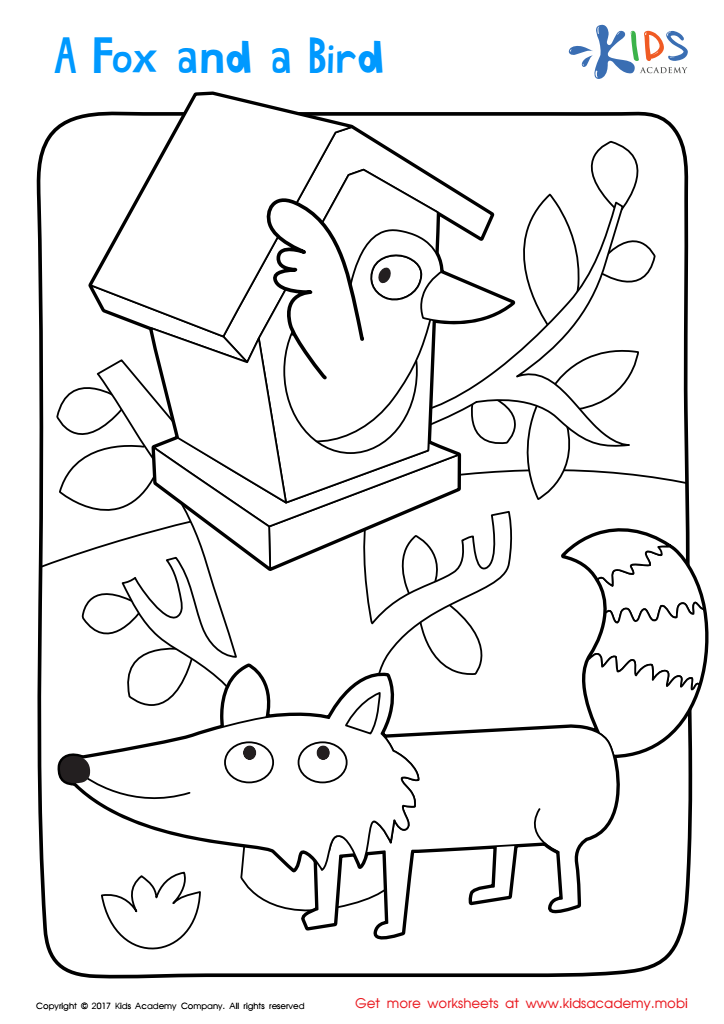

A Fox and Bird Coloring Page
Flex their creativity with this fun-filled coloring page: A Fox and Bird! Let kids express themselves through colors, allowing them to make each scene their own. This picture will bring joy to their art routine!
A Fox and Bird Coloring Page
Worksheet
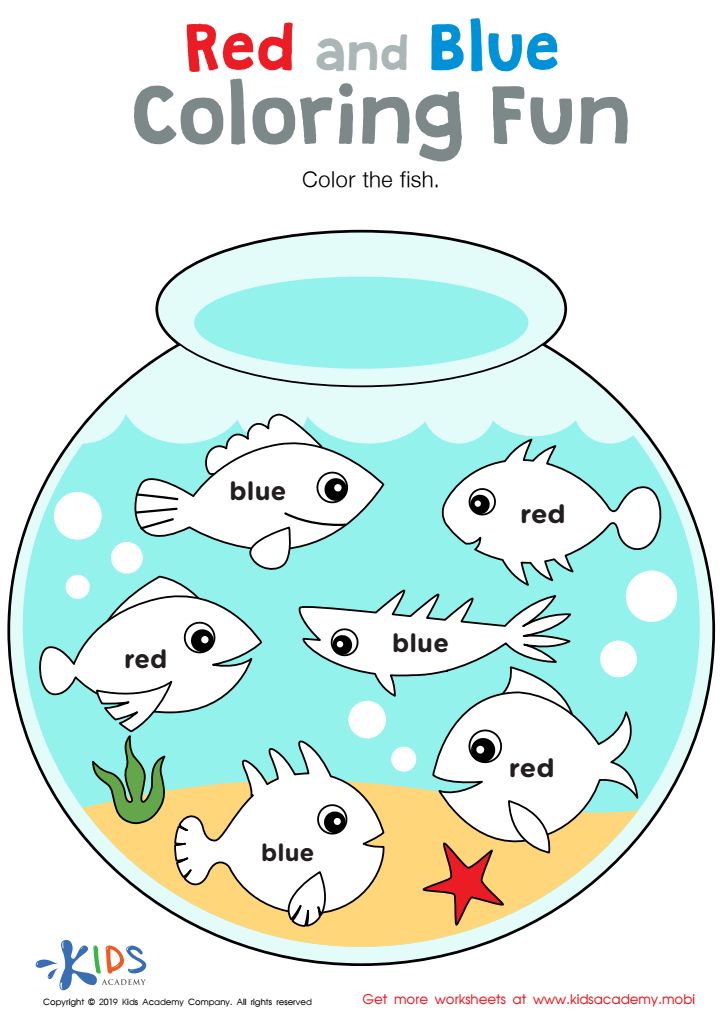

Red and Blue Coloring Fun Worksheet
Kids know colors like red and blue. But can they read these words? Give them practice with this fun fish bowl coloring sheet. They'll look at the fish, then color them the corresponding hue. Home or classroom, they'll be sure to get a kick out of learning colors in this creative way!
Red and Blue Coloring Fun Worksheet
Worksheet
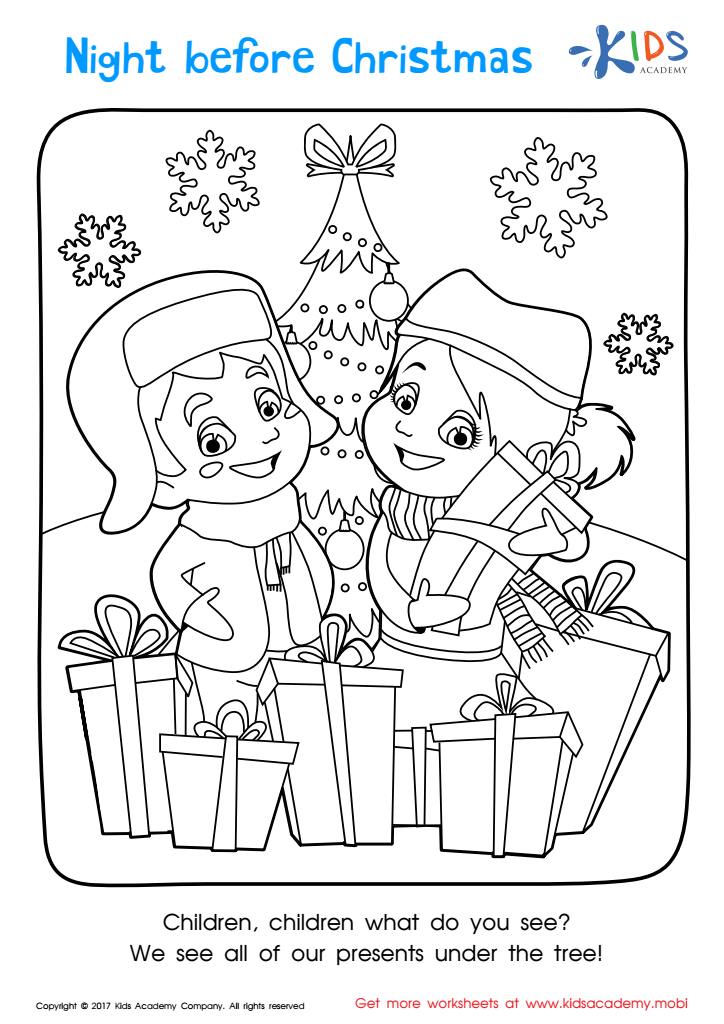

Christmas: Night Before Christmas Printable
Give your kids the gift of coloring this season! Use this boy and girl page to start a conversation on the spirit of giving. Ask your child what they'd like to give and remind them that giving is just as important as receiving. Then, help them pick the perfect colors to bring the image to life! Your child will get in the Christmas spirit while getting ready for Santa's arrival. Print the festive page and spread the joy of the season!
Christmas: Night Before Christmas Printable
Worksheet
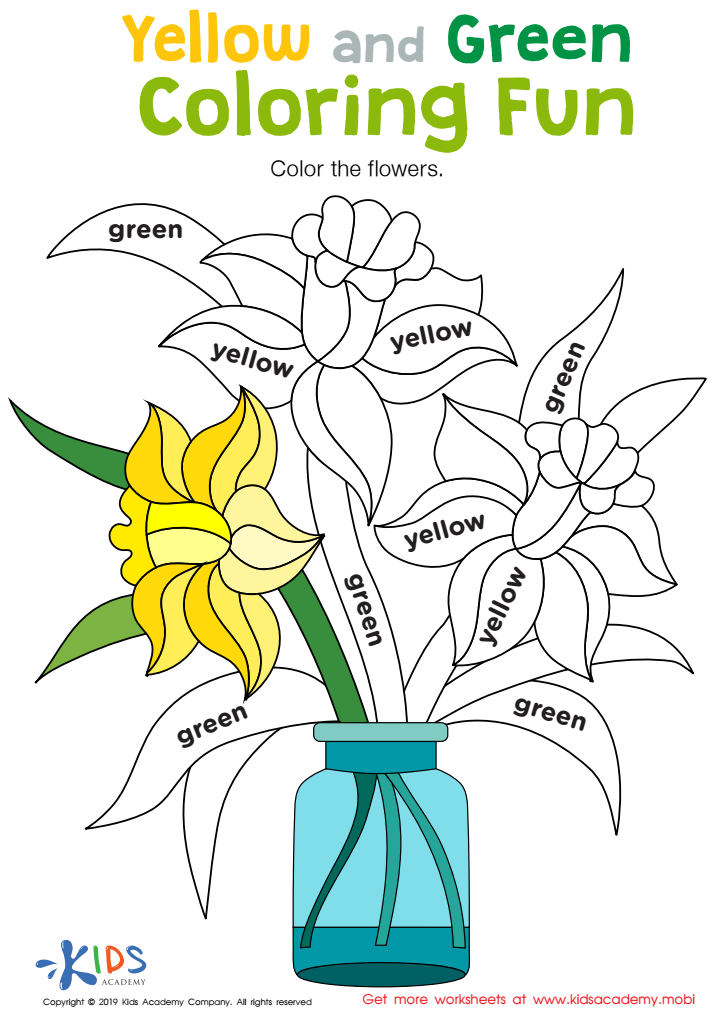

Yellow and Green Coloring Fun Worksheet
Sight words like "yellow" and "green" are easy to teach and fun for kids to learn. This free downloadable worksheet has kids read the color words and color the flower with yellow and green. A great activity for learning to read color words!
Yellow and Green Coloring Fun Worksheet
Worksheet
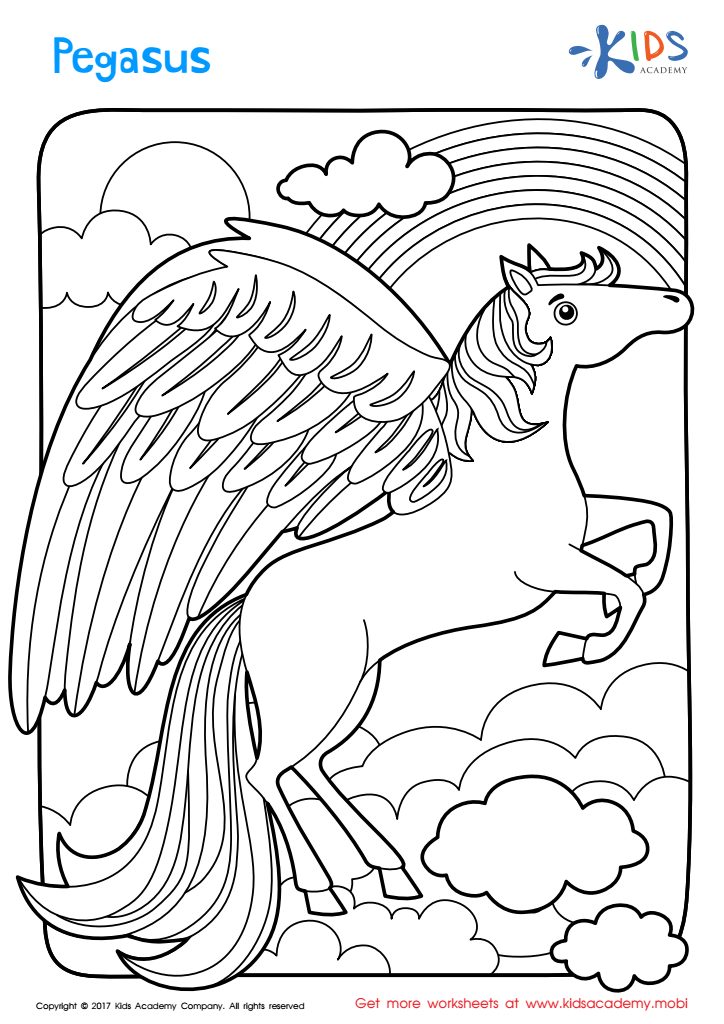

Pegasus Printable
Learn about ancient Greek mythology with your child! Print our Pegasus coloring page to bring the myths to life. Encourage your child to read the stories and let his/her imagination soar. This activity will make the tales of the gods come alive!
Pegasus Printable
Worksheet
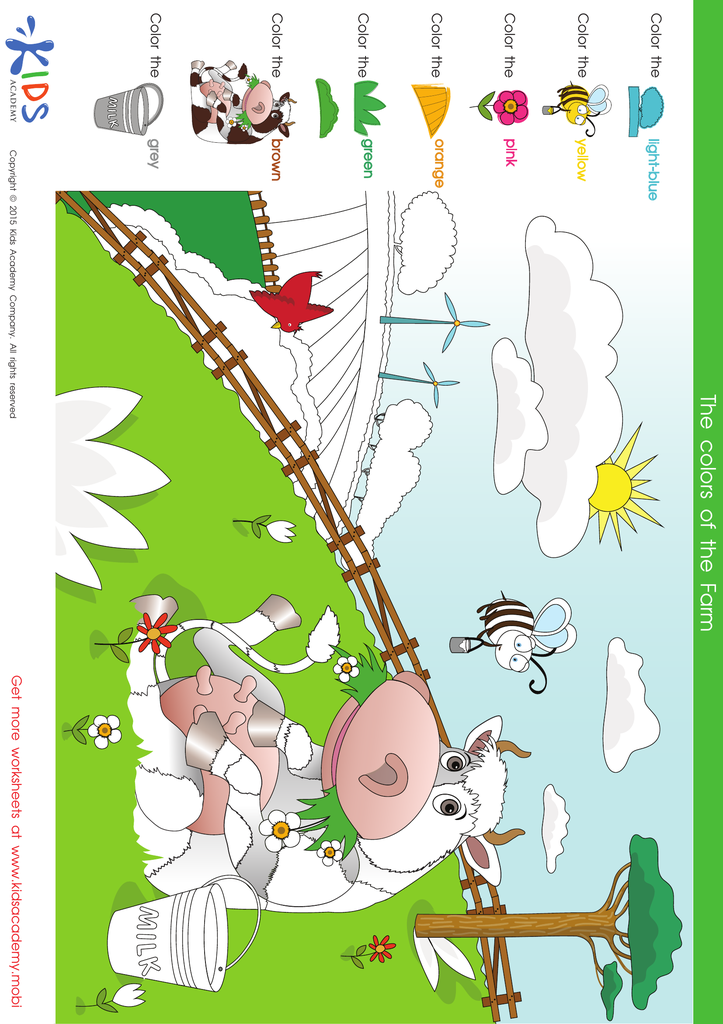

Color the Cow and the Fields Coloring Pages
Let's color a cow in the field and create a new story about farm life! Use the tips in the left side of the picture and have fun! Other coloring sheets can be found at Kids Academy - download and print more materials and develop your kids' skills. Enjoy!
Color the Cow and the Fields Coloring Pages
Worksheet
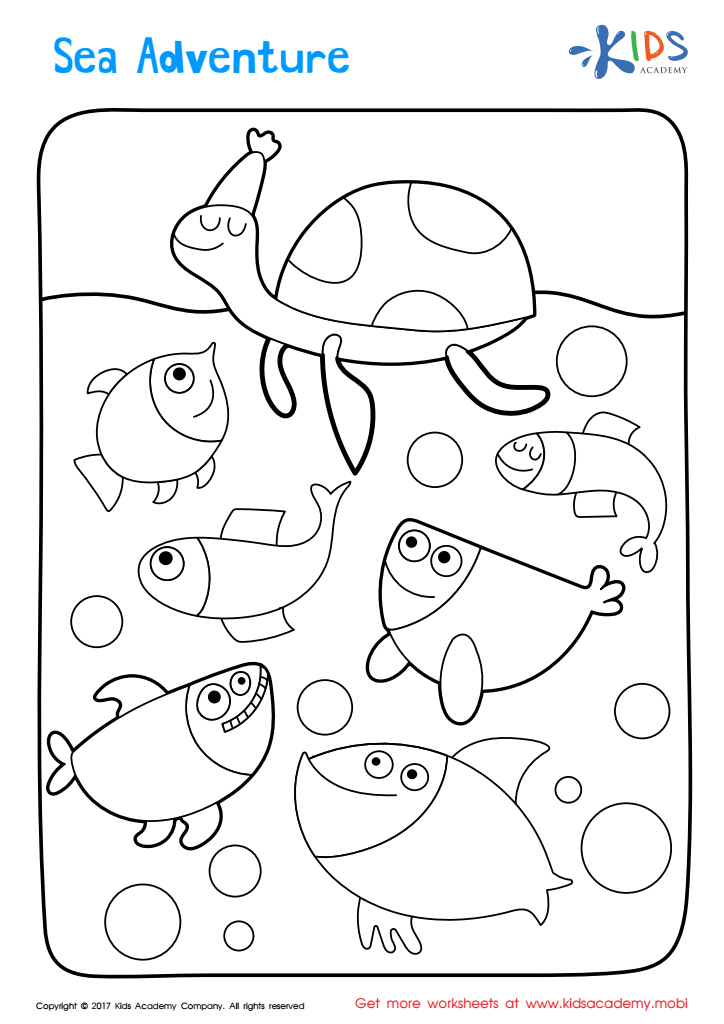

Sea Adventure Coloring Page
Explore the sea with a turtle and color the Sea Adventure printable! Let the turtle lead the way and let the fish watch and follow as kids unleash their creative side and pick the best colors. Have fun!
Sea Adventure Coloring Page
Worksheet
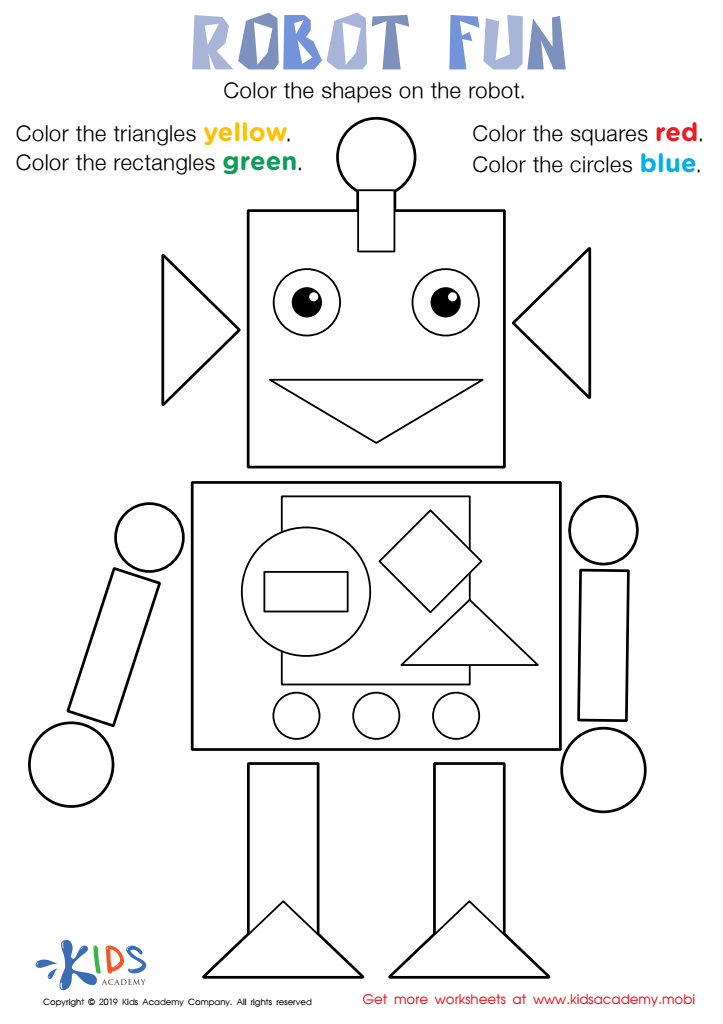

Robot Fun Worksheet
Help your child learn about basic shapes with this fun robot worksheet! Kids practice identifying circles, squares, rectangles and triangles, then color each shape according to directions. Make math practice enjoyable with this coloring page that teaches all four basic shapes - it's an important math skill!
Robot Fun Worksheet
Worksheet
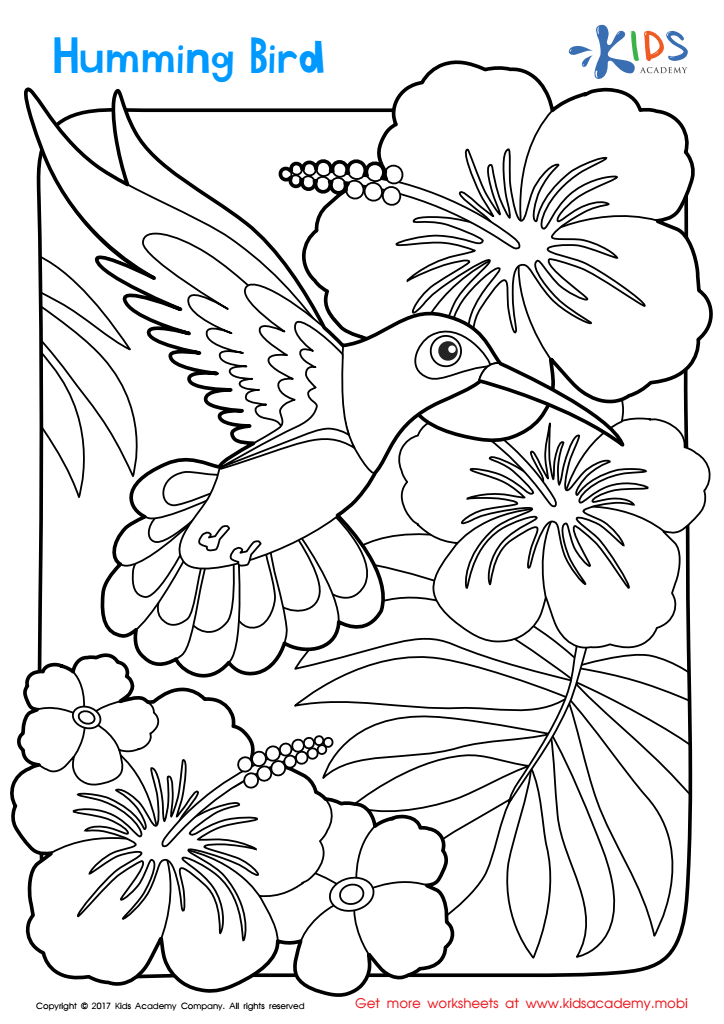

Humming Bird Worksheet
Encourage your child to explore nature with this lovely hummingbird coloring page! Use pictures to learn about the bird and extend the experience with a hummingbird feeder. See the beautiful creature in your own backyard!
Humming Bird Worksheet
Worksheet
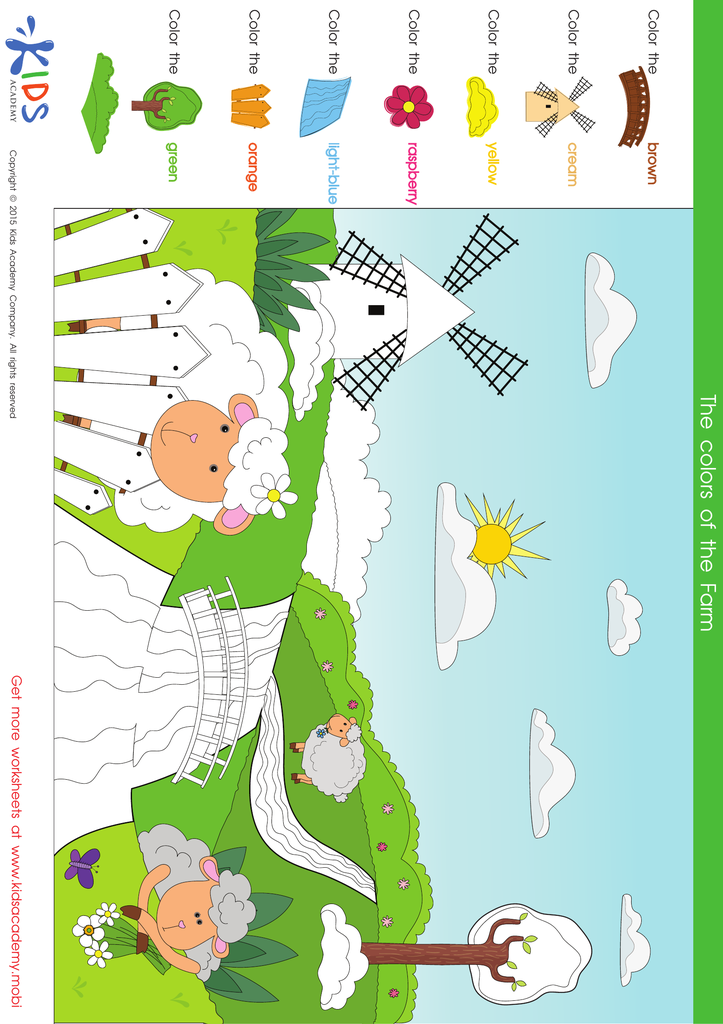

Color the Sheep in the Field Coloring Pages
Kids can have fun and study at the same time with Kids Academy's worksheets! Download and print the learning activities, such as coloring pages. Carefully color the sunny worksheet, take a look at the tips, and pick more free printable pages to enjoy. Let's have some fun together!
Color the Sheep in the Field Coloring Pages
Worksheet
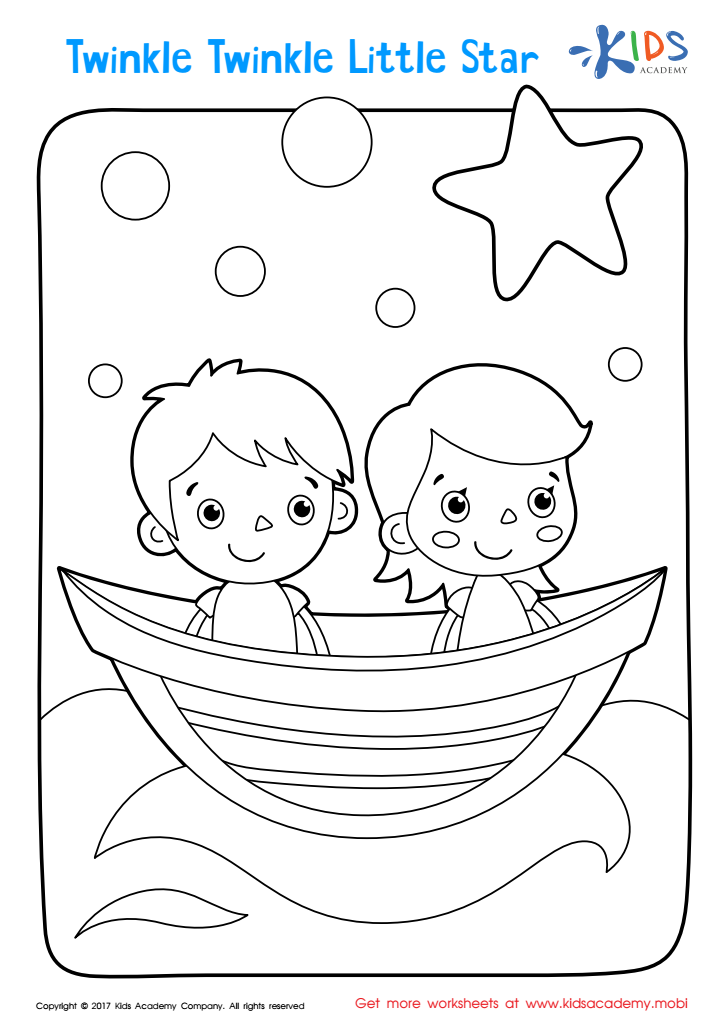

Twinkle Twinkle Little Star Coloring Page
Let your child wish upon a star as they color this scene of boy and girl stargazing. Sing Twinkle Twinkle Little Star while they choose colors to show the star twinkling in the night sky.
Twinkle Twinkle Little Star Coloring Page
Worksheet
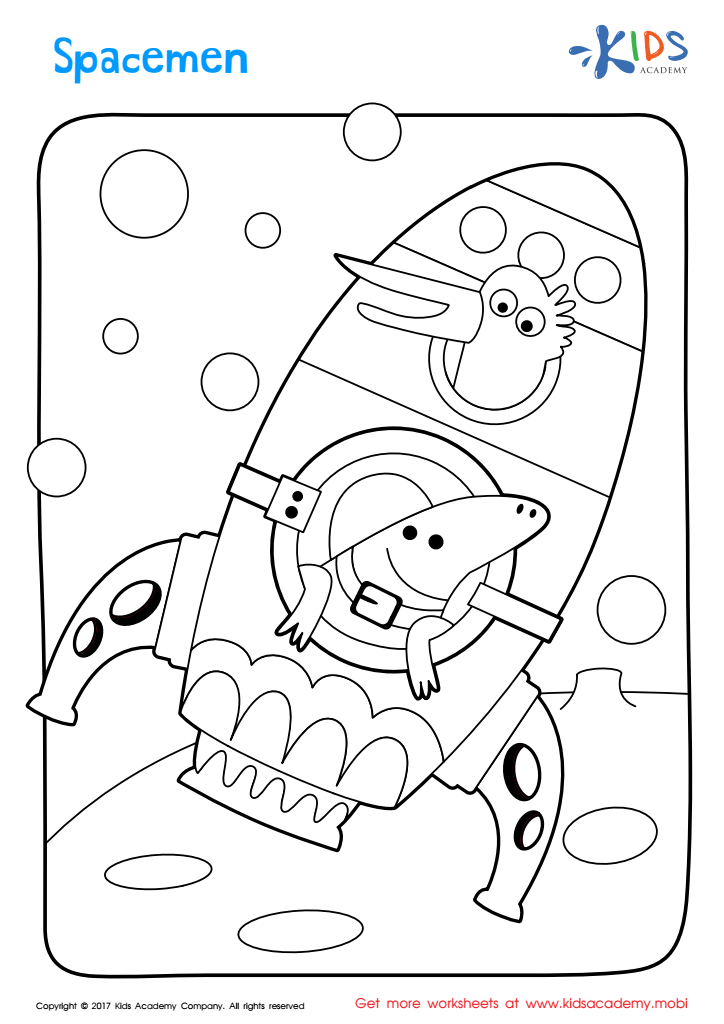

Spacemen Coloring Page
Let your child explore outer space with this fun coloring page featuring different spacemen shapes and sizes! From cute and funny creatures to distant planets and moons, this page is sure to spark your child’s imagination and interest!
Spacemen Coloring Page
Worksheet
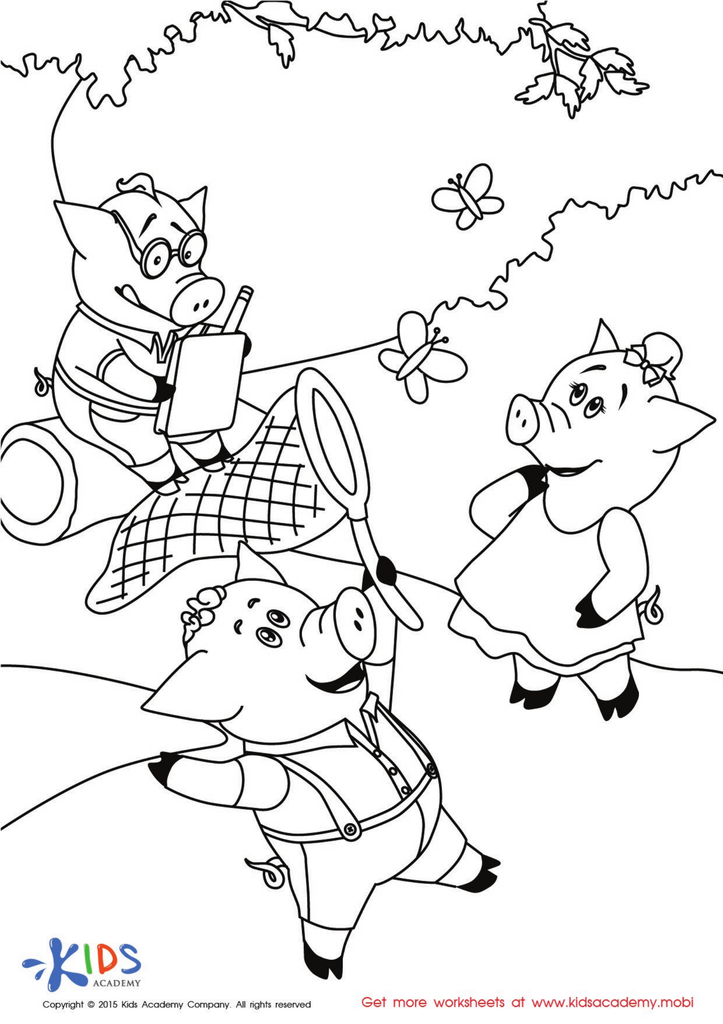

The Three Little Pigs Coloring Worksheet
Let your kid bring this simple scene to life with some color! Have them make the grass green, the sky blue and the butterflies joyful. After they finish, why not ask them what will happen next to the two idling pigs and the hardworking one? Check our website for more coloring book pages to collect the full story of the Three Little Pigs.
The Three Little Pigs Coloring Worksheet
Worksheet
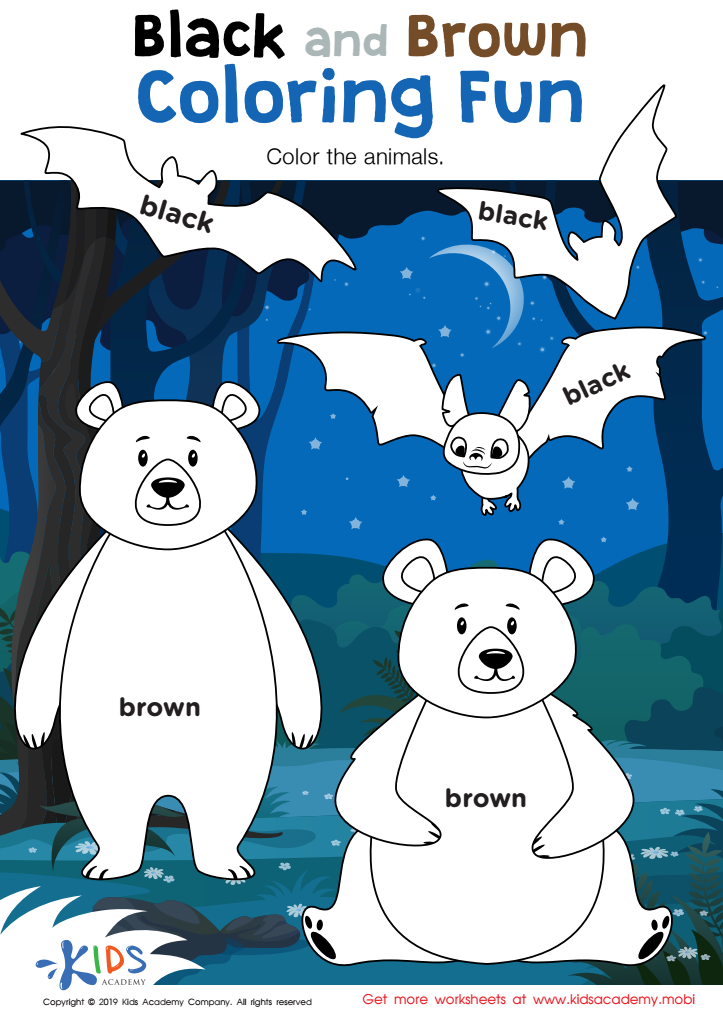

Black and Brown Coloring Fun Worksheet
Young readers can learn the difference between black and brown with this free, downloadable worksheet. The page features coloring activities: students color bears brown and bats black. This helps children learn to read color words by sight, as they are among the first reading experiences for young ones. But black and brown can be tricky as they start with the same consonant sound. This worksheet will help clear up any confusion.
Black and Brown Coloring Fun Worksheet
Worksheet
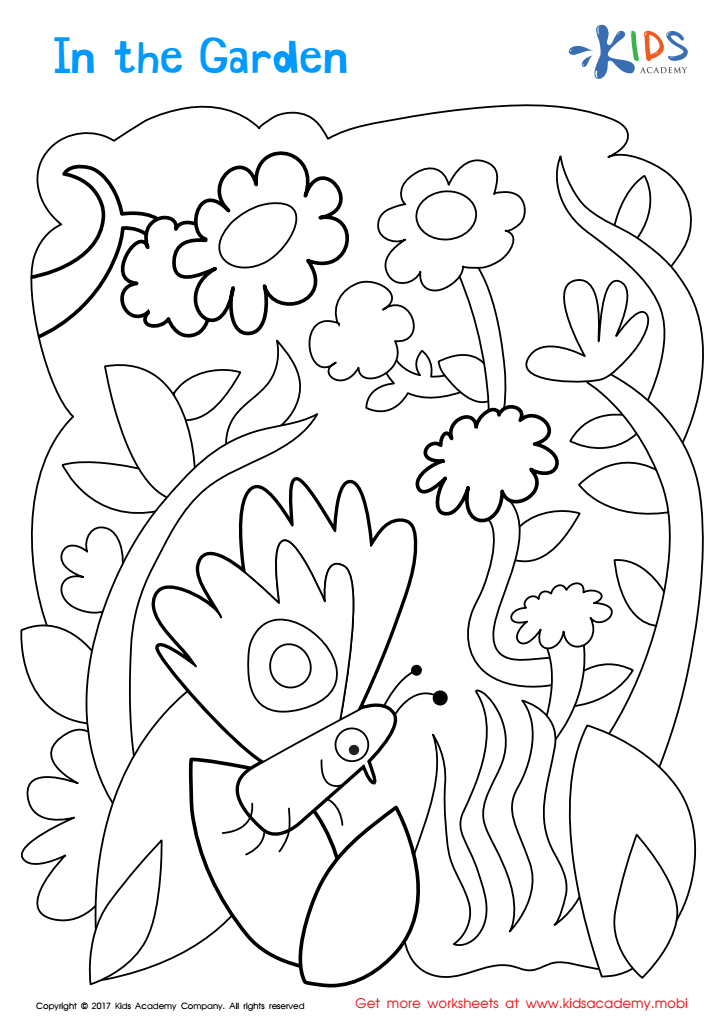

In The Garden Coloring Page
Explore nature with this fun coloring page! Take a walk out to the garden and observe the plants and animals. Help your kids learn and grow – connect the page to the natural wonders outside their window. In the Garden coloring page – make your kids smile!
In The Garden Coloring Page
Worksheet
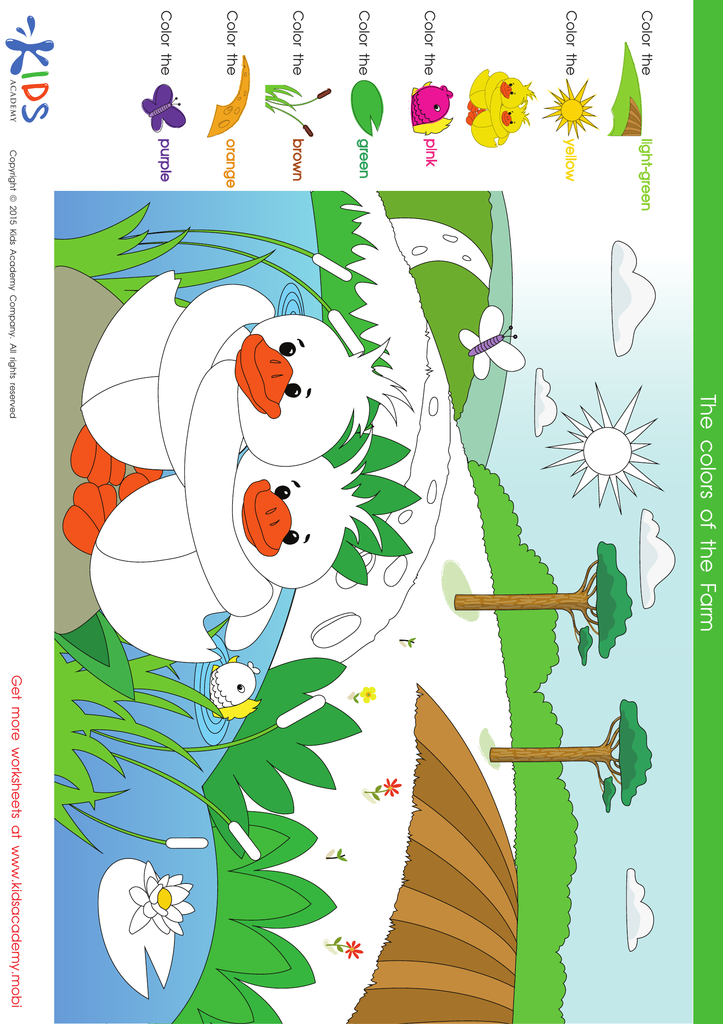

Color the Ducklings near the Pond Coloring Pages
Coloring pages are a great way to entertain kids and help them learn. Get our collection of worksheets at Kids Academy. Help them explore their imagination with bright colors and tips. Kids will have fun and improve their motor skills. Get more materials at Kids Academy!
Color the Ducklings near the Pond Coloring Pages
Worksheet
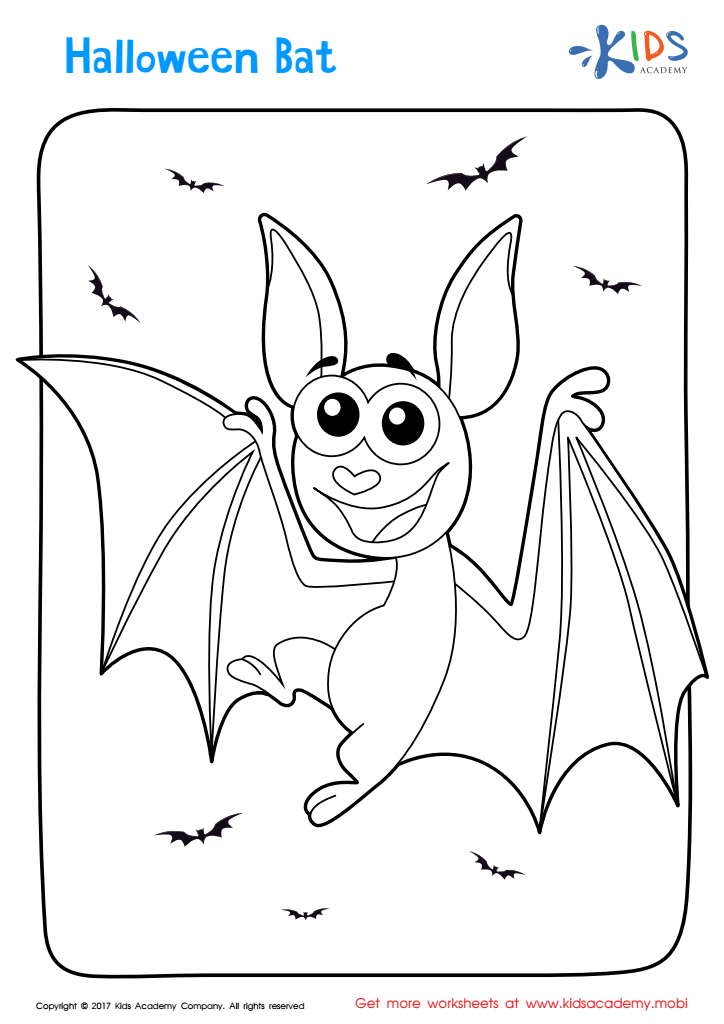

Halloween: A Bat Printable
Give your child a Halloween boost with our free coloring page. They'll have a blast adding their own decorations and creating a spooky scene!
Halloween: A Bat Printable
Worksheet
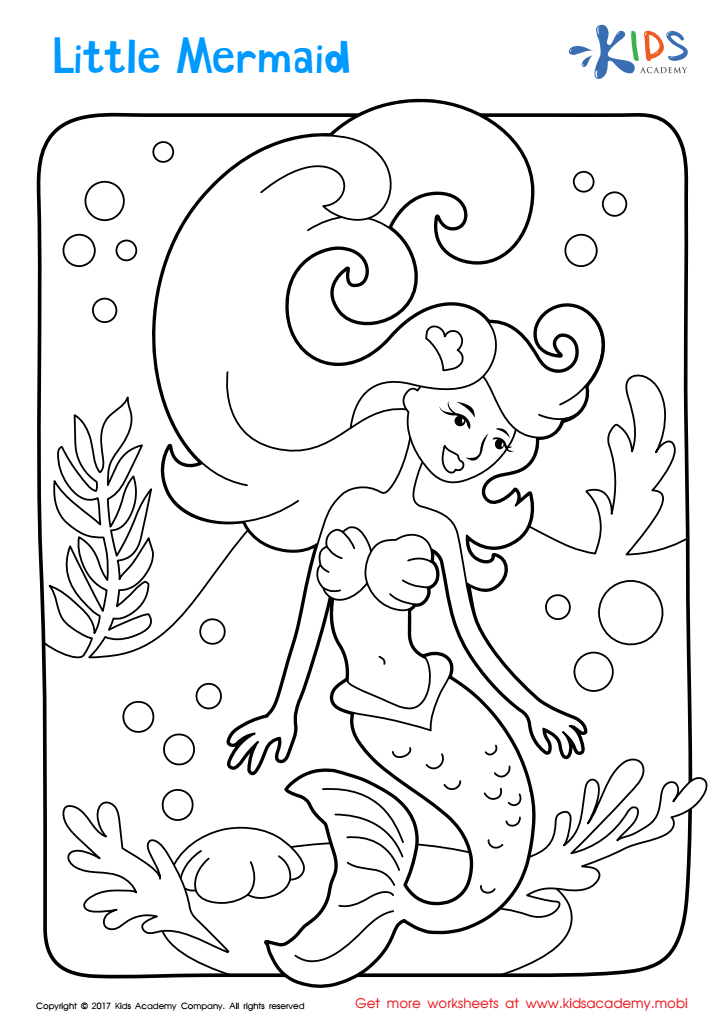

Little Mermaid Coloring Page
Dive into imagination and explore the magical creatures of the sea with this enchanting Little Mermaid printable coloring page! Let your child bring the beautiful mermaid and her ocean home to life with their favorite colors. They'll have a blast!
Little Mermaid Coloring Page
Worksheet
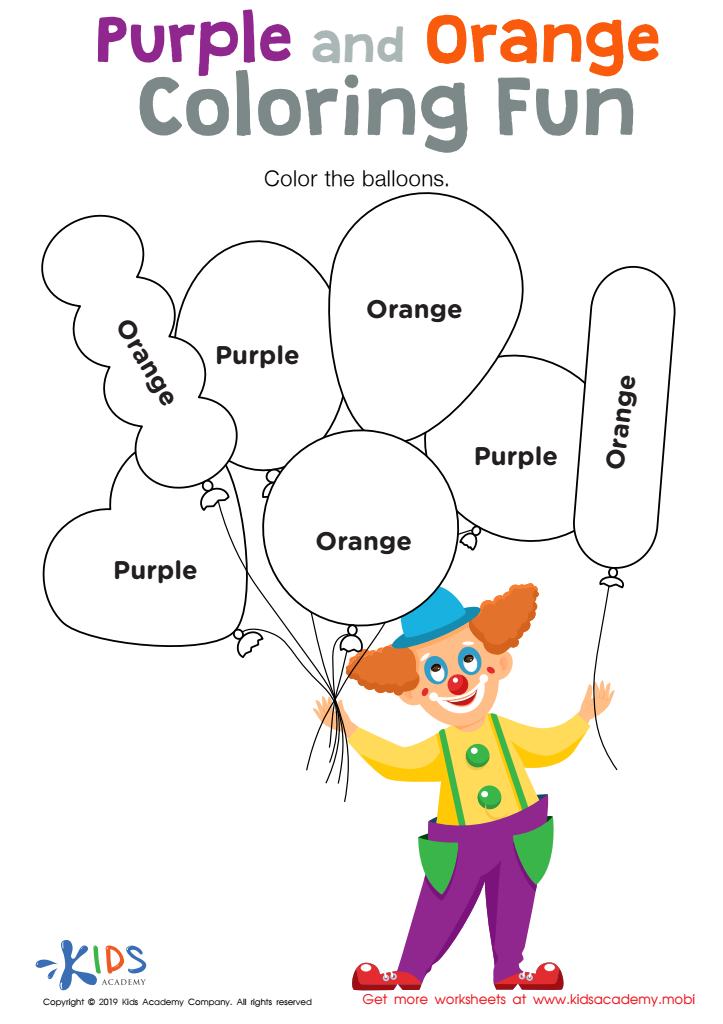

Purple and Orange Coloring Fun Worksheet
Children should learn to read color words early on. This coloring worksheet helps with that! Kids read the words "purple" and "orange" on each balloon and color them accordingly. It's a great activity for boosting literacy and having fun at the same time! Watch your child gain more reading confidence with this cute clown printable.
Purple and Orange Coloring Fun Worksheet
Worksheet
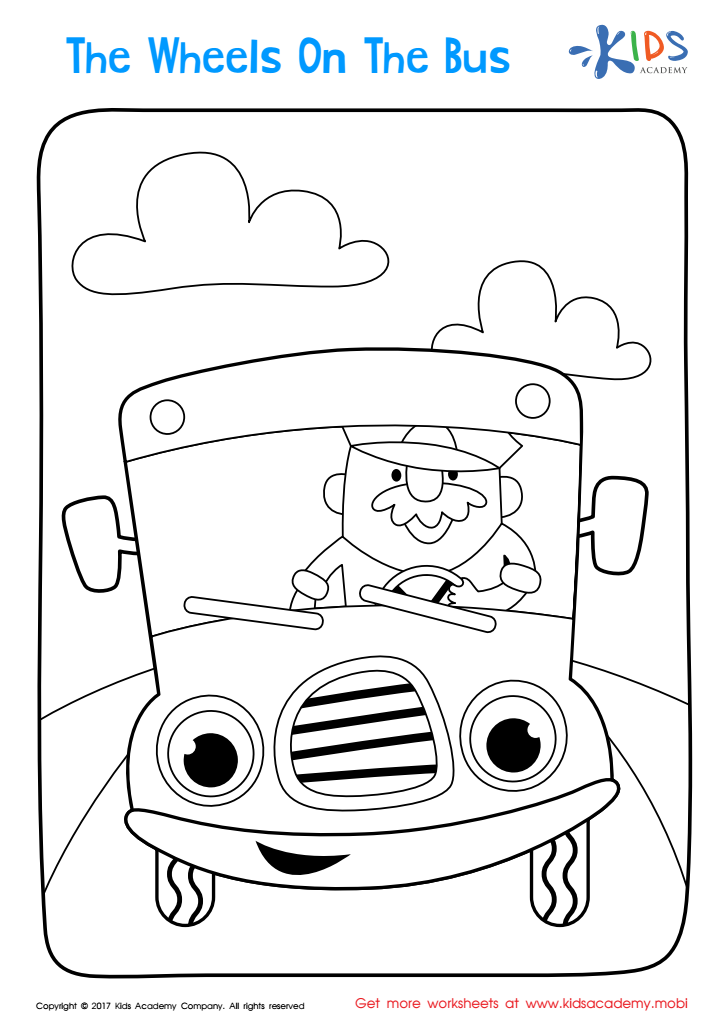

The Wheels on the Bus Coloring Page
Colour and sing with this printable Wheels on the Bus page! Let your child have fun singing the song with you as they colour. It'll make the activity even more entertaining and memorable.
The Wheels on the Bus Coloring Page
Worksheet
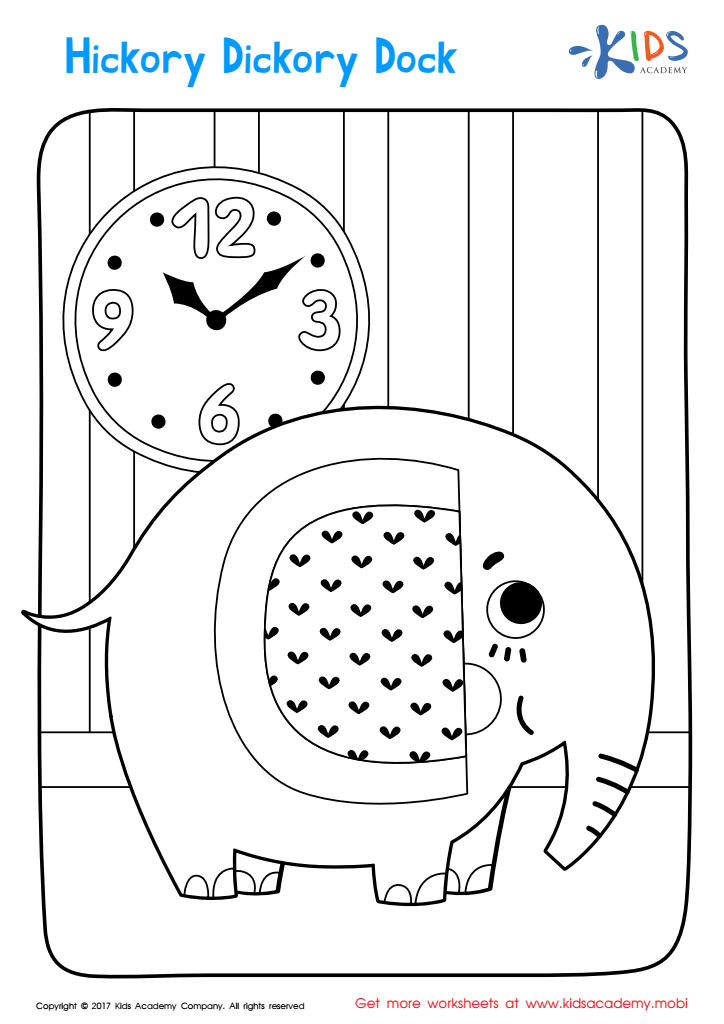

Hickory Dickory Dock Coloring Page
Sing and color with your child! Enjoy the classic nursery rhyme Hickory Dickory Dock as they color this fun printable. Watch the elephant climb and crash down the clock in the final part of the song. It's sure to bring smiles and giggles!
Hickory Dickory Dock Coloring Page
Worksheet
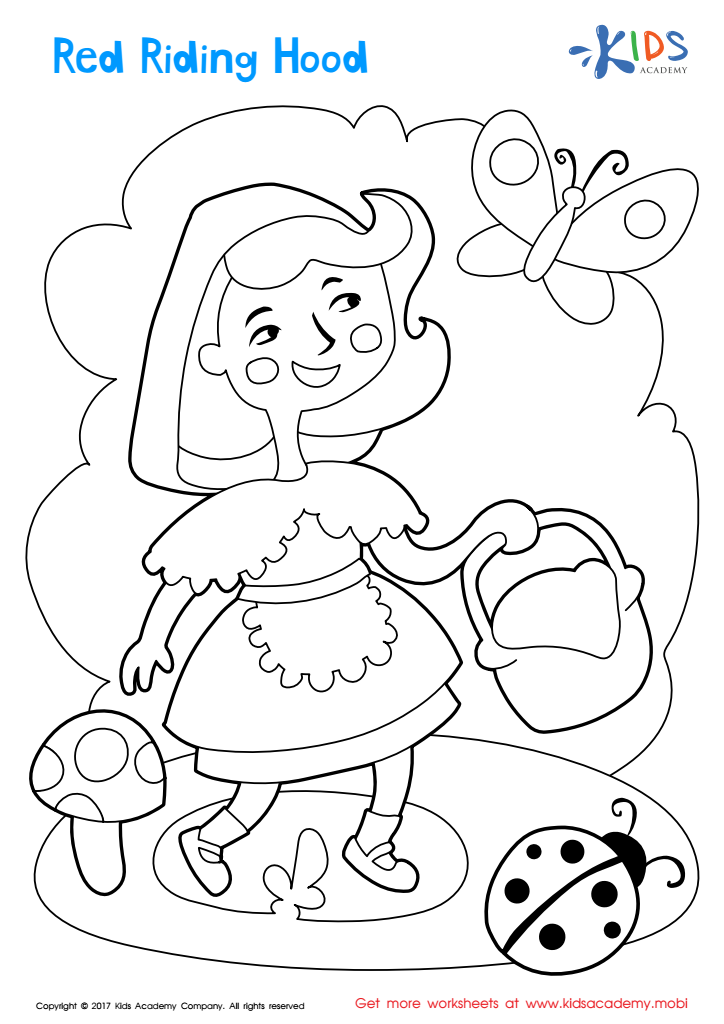

Red Riding Hood Coloring Page
Red Riding Hood awaits in the woods, with a butterfly, mushroom, and ladybug around her. Let your child bring the story to life with this magical printable coloring page. Fairytale fun for all!
Red Riding Hood Coloring Page
Worksheet
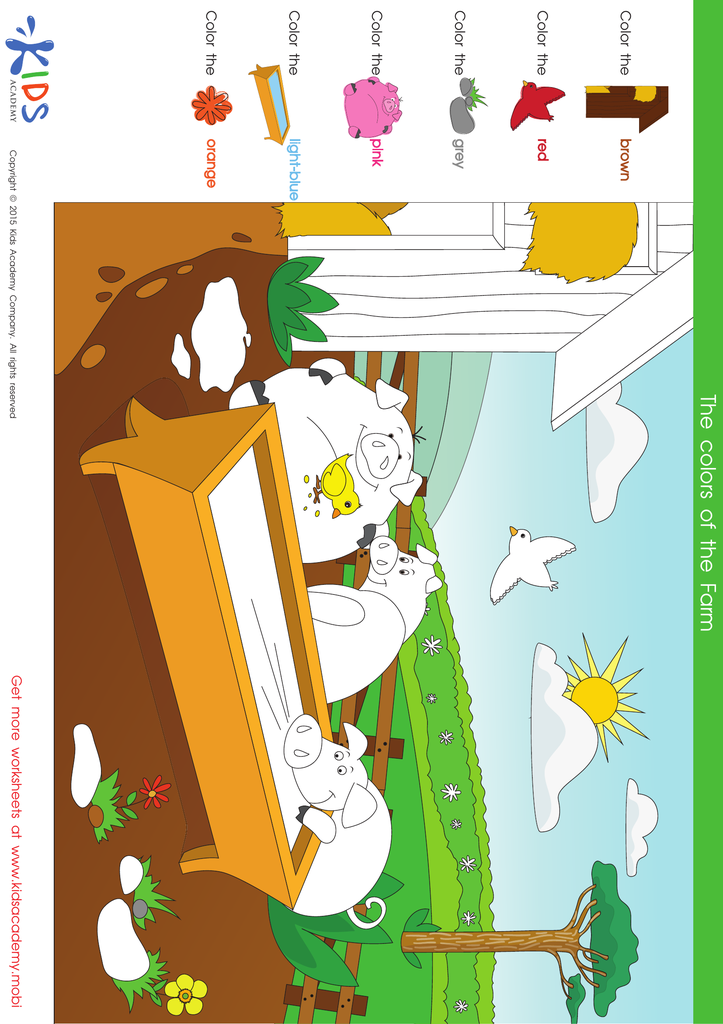

Color the Pigs in the Yard Coloring Pages
You'll have a great time with the three happy pigs, having a summer day rest in the sun. Follow the tips and be creative while coloring the picture! Enjoy!
Color the Pigs in the Yard Coloring Pages
Worksheet
 Assign to the classroom
Assign to the classroom
